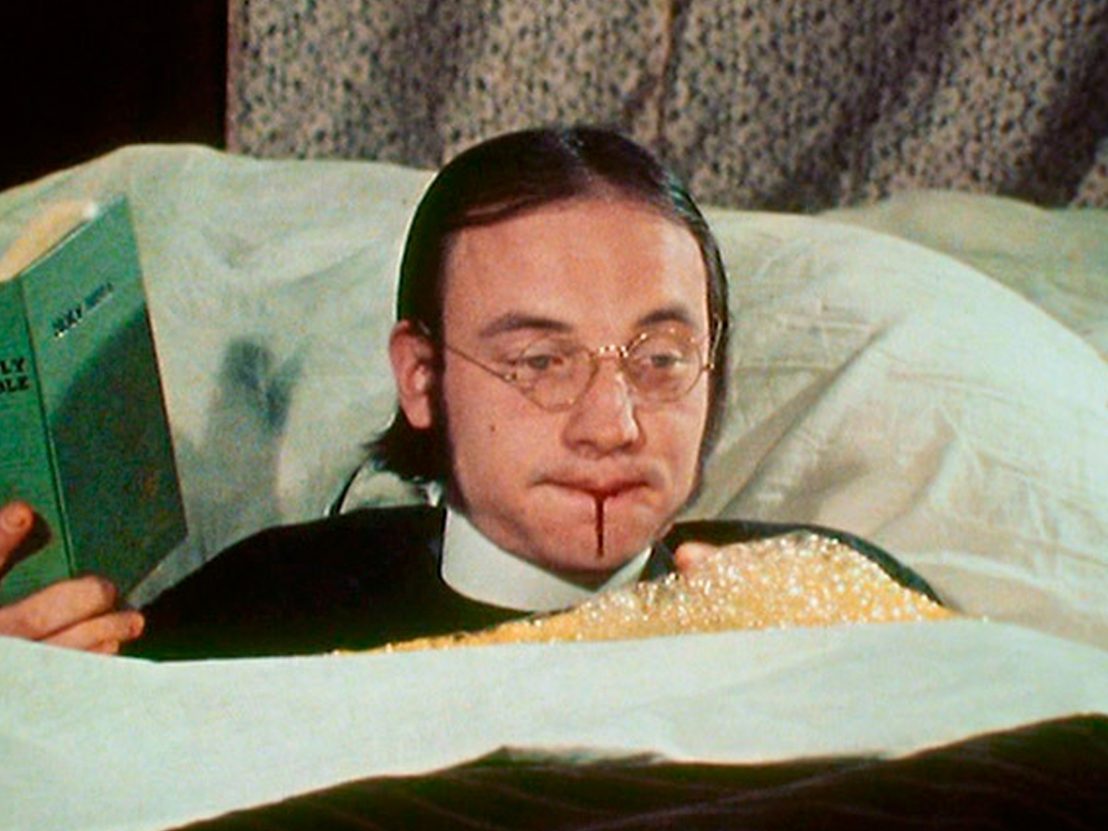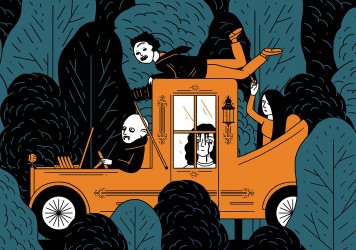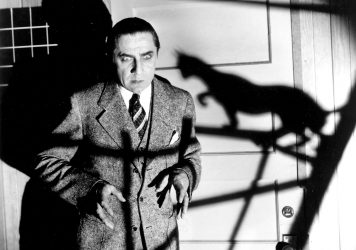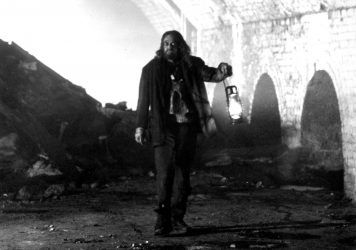
In a 2007 Patton Oswalt stand-up special, one of the comedian’s bits involves a horror film that he has recently discovered. “I’m not making this up. Go IMDb this. This is a real movie. Death Bed: The Bed That Eats People,” proclaims a giddy Oswalt. “And it’s about a bed…that’s evil…and it eats people. That’s the whole movie!”
Oswalt slightly mistitles the film, but a quick IMDb search does indeed confirm that he isn’t making this up. Back in the 1970s, an American independent filmmaker named George Barry really did make a movie called Death Bed: The Bed That Eats, the title of which is somehow even more alluring without “People” added on to the end, mostly in that it opens up the possibilities for what the bed in question could potentially consume. Per Oswalt’s largely derisive routine, Death Bed’s concept alone certainly invites a certain level of ridicule. Yet this absurd premise is effectively a devilish trojan horse; or rather, a duvet that covers up one of the most novel and imaginative psychotronic experiences of the era.
Opening with a black screen accompanied by a soundtrack of pronounced chomping sounds, Death Bed wastes no time introducing us to its titular monster. The bed is an ornate four-poster model, tucked away in a dungeon-like guest house next to a mansion on an abandoned rural estate. As a procession of human fodder wanders onto the property – which the film breaks into chapters cheekily titled “Breakfast”, “Lunch”, “Dinner” and, finally, “Just Desserts” – the bed’s tragic backstory is gradually doled out. Forged in the late 19th century by a wind demon in order to consummate his feelings for a woman, the bed then became infused with its creator’s grief and rage when she consequently died during the act.
In one of the many bizarre facets of Death Bed, this calamitous saga is conveyed to us by the spirit of Aubrey Beardsley, a real-life tuberculosis-stricken 19th century English illustrator who acts as the film’s narrator. Trapped behind a painting, the artist (played by notable rock music critic Dave Marsh) is doomed to watch the bed satiate its hunger, seen in a series of flashbacks that bring us up to the present. Beardsley guides us through these tales of former occupants – from aristocrats to brothel patrons to gangsters-in-hiding – as they all meet their hideous plush and fiber end. “You are nothing if not grotesque,” Beardsley intones towards the bed at one point, “Except hungry, of course.”
Like the bed itself, George Barry’s film endured its own tumultuous history. Shot in Detroit and painstakingly edited over the course of several years, Death Bed was completed in 1977, only for attempts to find distribution coming up empty. Nevertheless, the film seeped out into the world via an unauthorized bootleg released in Britain in the early ‘80s, with further dubs subsequently popping up in video shops around the world.
From there, the legend of Death Bed would propagate in subterranean film circles, with Barry remaining completely oblivious to it all until seeing an online review in 2001. At this point, efforts were made to finally give Death Bed a proper release, with the film officially debuting at the San Francisco Independent Film Festival and then on DVD from home video label Cult Epics in 2003, a full quarter century after its initial completion.

Of course, the question that naturally arises when approaching Death Bed is: how exactly does this bed eat? The answer lies in some of the more memorable low-budget special effects work of the time. The process begins with a yellow foam that rises from the mattress, enveloping the victim and sucking them down into the bed’s belly, an acid aquarium of sorts that strips the flesh right off.
In one signature moment, a character reaches down into the foam to unsuccessfully try to save a friend, only for his hands to re-emerge in a skeletal state. As the film’s title suggests, it isn’t just people that the bed craves either – a picnic lunch, consisting of a bucket of fried chicken and a bottle of wine, is scarfed down at one point, with the bed spitting up the garbage afterwards. It even faces the odd digestive problem, sucking back a bottle of Pepto Bismol after one particularly hearty meal.
Beyond Death Bed’s pronounced sense of humour, perhaps the most striking aspect of Barry’s vision is its hypnotic atmosphere. The film was based on a dream Barry had, and employs an accordingly surreal aesthetic in its execution, frequently ending up closer in tone to filmmakers like Jean Rollin or Jess Franco. Barry claimed inspiration from both European art house films and American exploitation fare, and Death Bed hits upon a hallucinatory balance between the two. A late escape attempt in which a wounded character pulls free from the bed and crawls in an excruciatingly slow manner towards the door is at once funny, gripping and otherworldly; a moment of durational weirdness that brings to mind the kitschy spider web sequence in Massimo Pupillo’s legendary 1965 Italian horror oddity Bloody Pit of Horror.
As a result, Death Bed has accrued some critical support since its re-emergence, most notably from historian Stephen Thrower in his seminal cult film text Nightmare U.S.A. Still, the film’s reputation has mostly remained one of mockery and eventual disregard, with the film attaining that tired label of being “so-bad-it’s-good”.
When Barry sadly passed away at the end of 2022, there was virtually no news about him or the fascinating legacy of the one and only film he ever made. Twenty years on from its long-delayed official premiere, Death Bed deserves to take its place among the all-time great midnight-movie experiences. And even for those that are simply craving a hit of horror madness that delivers in spades on its outlandish conceit, Death Bed: The Bed That Eats is more than willing to whet one’s appetite.
Published 16 Mar 2023

Join us on an epic round the world trip to some of the darkest reaches of horror cinema.

By Anton Bitel
The Black Cat was the first of six Universal pictures to star Boris Karloff and Bela Lugosi.

By Thomas Hobbs
This 1972 British B-movie is essential viewing in the wake of the recent Grenfell tragedy.